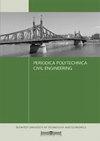使用Grasshopper自动扫描到BIM操作
IF 1.4
4区 工程技术
Q3 ENGINEERING, CIVIL
引用次数: 0
摘要
近年来,激光扫描和摄影测量等遥感技术在现场到bim的工作流程中取得了显著进展,成为建模已建框架的关键工具。它们可以用来收集建筑状况的密集三维测量数据,并对导出的点云进行处理,生成建成后的BIM。它提供建筑信息以报告竣工情况,并作为土木工程中解决问题的数据技能集。本研究为修改和评估点云数据提供了一个高效和自动化的工作流程,重点是支持扫描到bim的操作。该工作流利用立方体素网格创建和体素子采样技术来确保扫描数据的精确表示。使用Grasshopper和Volvox对这种重建方法进行验证,证明了其减少传统扫描到bim方法中通常需要的手工劳动和分析的潜力。所提出的工作流程简化了获取建筑概况的关键任务,这是一个重要的BIM结果,并简化了整个过程。Volvox插件的集成进一步增强了Grasshopper和Rhino的功能,为用户提供了操作点云的直观工具。通过所提出的工作流程自动化某些操作具有提高扫描到bim方法的效率和准确性的巨大潜力。这些发现对建筑和设计具有启示意义,展示了如何利用技术来解锁新的可能性并简化关键流程。本文章由计算机程序翻译,如有差异,请以英文原文为准。
Automating Scan to BIM Operations Using Grasshopper
Remote sensing technologies such as laser scanning and photogrammetry have advanced significantly in the field-to-BIM workflow in recent years, becoming key instruments for modeling as-built frameworks. They can be utilized to collect dense 3D measured data on the condition of a building, and the derived point cloud can be processed to generate the as-built BIM. It provides building information to report as-built conditions and serves as a skill set for data on problem-solving issues in civil engineering. This research presents an efficient and automated workflow for modifying and evaluating point cloud data, focusing on supporting scan-to-BIM operations. The workflow utilizes cubic voxel mesh creation and voxel subsampling techniques to ensure precise representation of scanned data. The validation of this reconstruction methodology using Grasshopper and Volvox demonstrates its potential to reduce manual labor and analysis typically required in conventional scan-to-BIM methodologies. The presented workflow simplifies the critical task of acquiring building profiles, an essential BIM result, and streamlines the overall process. The integration of the Volvox plugin has further augmented the capabilities of Grasshopper and Rhino, providing users with intuitive tools for manipulating point clouds. Automating certain operations through the presented workflow has significant potential to enhance the efficiency and accuracy of the scan-to-BIM methodologies. These findings have implications in architecture and design, demonstrating how technology can be leveraged to unlock new possibilities and streamline critical processes.
求助全文
通过发布文献求助,成功后即可免费获取论文全文。
去求助
来源期刊

Periodica Polytechnica-Civil Engineering
工程技术-工程:土木
CiteScore
3.40
自引率
16.70%
发文量
89
审稿时长
12 months
期刊介绍:
Periodica Polytechnica Civil Engineering is a peer reviewed scientific journal published by the Faculty of Civil Engineering of the Budapest University of Technology and Economics. It was founded in 1957. Publication frequency: quarterly.
Periodica Polytechnica Civil Engineering publishes both research and application oriented papers, in the area of civil engineering.
The main scope of the journal is to publish original research articles in the wide field of civil engineering, including geodesy and surveying, construction materials and engineering geology, photogrammetry and geoinformatics, geotechnics, structural engineering, architectural engineering, structural mechanics, highway and railway engineering, hydraulic and water resources engineering, sanitary and environmental engineering, engineering optimisation and history of civil engineering. The journal is abstracted by several international databases, see the main page.
 求助内容:
求助内容: 应助结果提醒方式:
应助结果提醒方式:


